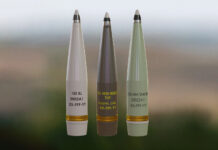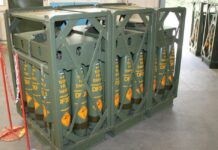In a previous article titled ‘The Art of Logistics’, published in ESD 03/2023, the authors looked into ammunition logistics, specifically the issue of required stock levels and supply to front lines. In this article, the authors look to longer-term logistics and supplies.
The previous article recalled ‘30 days of supply (30 DOS)’ as an oft-quoted benchmark for stockpile levels during the Cold War. Yet where the 30 day figure originally came from is an open question, at least in unclassified sources. It may have simply been a nice round number to be used for planning purposes, or alternatively, NATO planners may have figured that an all-out shooting war between NATO and the Warsaw Pact would either be over within 30 days, or would have gone nuclear. In either case, it would make no sense to plan beyond 30 days.
Regardless of the background for the 30 DOS, experience from Ukraine has shown that a high-intensity conflict between peer or near-peer opponents can last much longer than 30 days. At the same time, considering the quantities of ammunition in question, the cost of these munitions, the cost of storage, and the munitions’ expected shelf life, it is unrealistic to expect nations to build up stockpiles much in excess of 30 days’ consumption, except perhaps in specific and unique cases.
This raises the next, logical question regarding logistics, and not just for ammunition: What happens on the 31st day? Although this article mostly covers resupply to national depots, exactly the same arguments and questions can be raised regarding the post-delivery element of the supply chain, with regards to getting the delivered ammunition from depots and to the point(s) where it’s actually needed.

Credit: US ANG/Sgt. John Crosby
Concerning ammunition logistics, the 31st day (or whatever day stockpiled ammunition runs out) is about sustainability: How quickly and reliably can resupply take place? Resupply can primarily come from two sources: From industry, as new production ammunition, or from the (excess) stockpiles of allied/partner countries. The second of these will be ignored, since, as was pointed out in the previous article, in case of a major shooting war, allied/partner countries will almost certainly need their stockpiles themselves
This leaves the first option: resupply from industry on the 31st day. Following this route, there are two main factors that need to be taken into account: capacity and robustness.
Capacity
In short, what is the production and delivery rate of ammunition manufacturers? In other words, how much ammunition can industry provide per week, or month or year? How quickly can the production and delivery rate be increased, in the short and long term? Typically, when operating in peacetime, an ammunition producer will work under ‘normal’ conditions: five workdays per week, with one shift per workday. Providing that the required additional trained workers are readily available (which is not a given), the producer can relatively quickly ramp up to two or three shifts per day, as well as add workdays over the weekend to boost production volumes.
In the longer term, if additional production capacity is needed beyond what three shifts working 24/7 can manage, things start to become expensive. The producer will need to add production capacity in the form of additional space and machinery. In many cases, this will require additional infrastructure, in the form of buildings and roadways, with electricity, heat, water, sanitation, etc. It goes without saying that this will increase costs, as well as the time required.
As an example, shortly after the Russian invasion of Ukraine, US Secretary of the Army Christine Wormuth told reporters that the US Government had committed funding to ramp up production of 155 mm shells from 14,000 per month (which, incidentally, is 2-3 days consumption by the Ukrainian Armed Forces), to 20,000 per month by the spring of 2023, and 40,000 per month by 2025. The takeaway here is that achieving a tripling of production volumes is predicted to take three years.
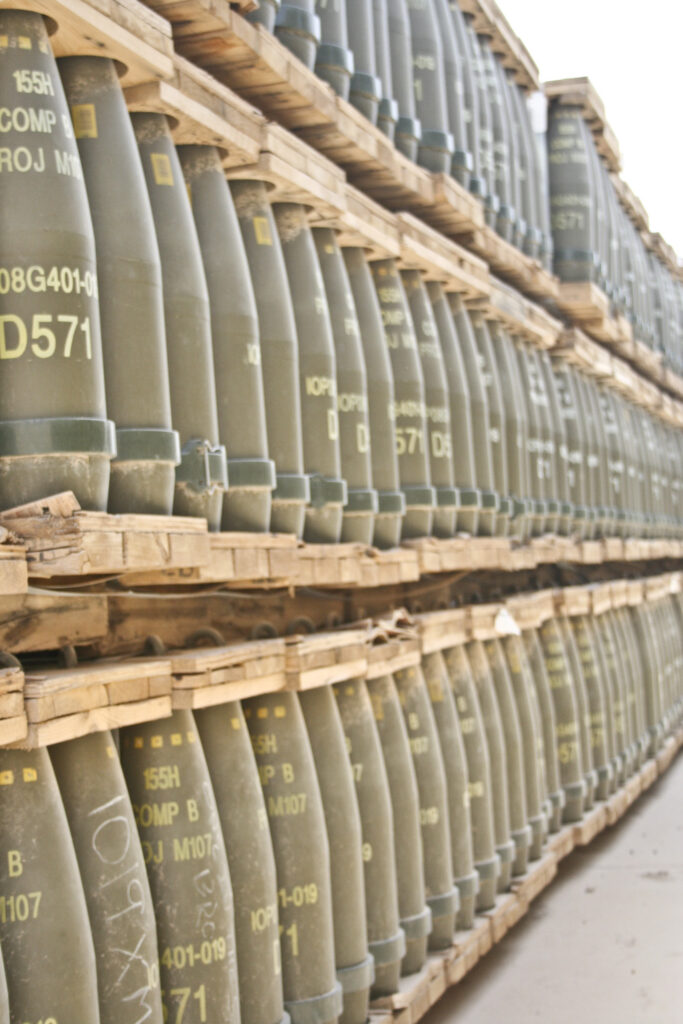
A further, and in many ways decisive, factor that needs to be considered are production and delivery bottlenecks, specifically the accurate identification of these. To take an example, based on the above US plans for artillery ammunition: If the US Government wishes to triple the production capacity for 155 mm shells, why can’t industry immediately increase production? Is it because the artillery ammunition producers themselves lack production capacity? Do they have adequate capacity, but cannot source sufficient raw materials, or do they lack the trained workers to operate the production lines? Or do they lack the storage capacities for the suddenly much larger volumes of raw materials, components and finished shells being processed? Unless these issues are correctly and adequately analysed, there is a considerable risk of spending a lot of time, money and effort on the wrong parts of the supply chain.
In addition to correctly assessing supply chain bottlenecks, another way to speed up production and supply rates is the stockpiling of strategic materials. In terms of ammunition, this would typically include copper, zinc, lead, steel and tungsten. Having stockpiles of these materials in place will allow faster ramp-up of production, since the additional raw materials required will already be at hand. This applies especially for materials that are sourced from non-allied nations, where continued supply in wartime is at risk. When planning stockpiling of this kind, it is of course necessary to consider the shelf life and correct storage of the materials being stockpiled, to ensure that they remain usable over time.
Robustness
This term essentially relates to the vulnerability of the supply chain, including supply of raw materials, production and transport to where the ammunition is needed. In other words, it relates to how vulnerable supply lines are to damage, whether from accidents, climate or enemy action.
The simplest, but not necessarily cheapest, way to increase supply line robustness is through redundancy. If, for example, all 155 mm ammunition is supplied by one single producer, with one single production facility, then a single accident or one successful enemy deep-strike can knock out our entire resupply strategy for months. The same applies if one vital raw material, such as nitrocellulose for propellant, is available from one source only.
The concept of multiple sources of a single item brings its own issues with it, however. One significant issue is cost. It is undeniably more expensive to maintain multiple producers for a single item than just one, especially for smaller nations with limited requirements.

Credit: USMC
Another issue is qualification of ammunition for specific platforms, and the possibility of effective monopoly, for example if the producer of our platform or weapon system insists that only their own ammunition be used (or the warranty is void). In this case, we are once again stuck with a single, non-robust supplier.
In addition to redundancy, even if limited to a single supplier or supply line, robustness can be increased through protective measures. These include: putting in place plans and measures to ensure that supply lines are protected from enemy action, as well as from natural disasters and accidents; and to ensure rapid repairs and minimum downtime in case of damage.
The ideal solution to the issue of robustness is, of course, a combination of redundancy and protection. As every single high-intensity war since World War I has shown, the ability to produce and supply ammunition will be a primary target for the enemy.
Solutions
According to a recent press release by the European Defence Agency (EDA) in late March, and at the time of writing, 24 states have joined EDA’s Collaborative Procurement of Ammunition effort. While the basic EDA effort encompasses a range of ammunition types and calibres, the initial impetus is the supply of 155 mm artillery ammunition. The stated purpose of the 155 mm effort is threefold:
- Coordinate and facilitate the supply and delivery of ammunition from national stockpiles and ongoing contracts to Ukraine.
- Aggregate and coordinate ammunition procurement from nations to achieve economies of scale through joint procurement, both for maintaining national stockpiles and for continued support to Ukraine.
- Ramp up European defence industry’s manufacturing capacity.
In the context of this article, the third point above is of particular interest. So far, nothing has been reported on exactly how EDA intends to achieve the ramp-up in capacity. The EDA has a long history of industry cooperation and engagement, so it will be interesting to see what specific solutions are developed.
Thinking further ahead, the recently issued ‘Marine Corps Doctrinal Publication 4’ (MCDP 4), coins the term ‘supply web’, as an alternative to ‘supply chain’, and this provides a very good conceptual image of the supply chain redundancy mentioned above. Instead of a single raw material source, supplying a single producer, using a single supply route to deliver ammunition to a single national depot, from where it is transported to a single forward supply point, each part of the logistics process is treated as a point in a web, rather than on a line. Each ‘step’ of the process has multiple redundancies, as do the connections between steps. This allows an almost immediate switch, for example from one producer to another, or between alternate supply routes, in case of damage or delay.
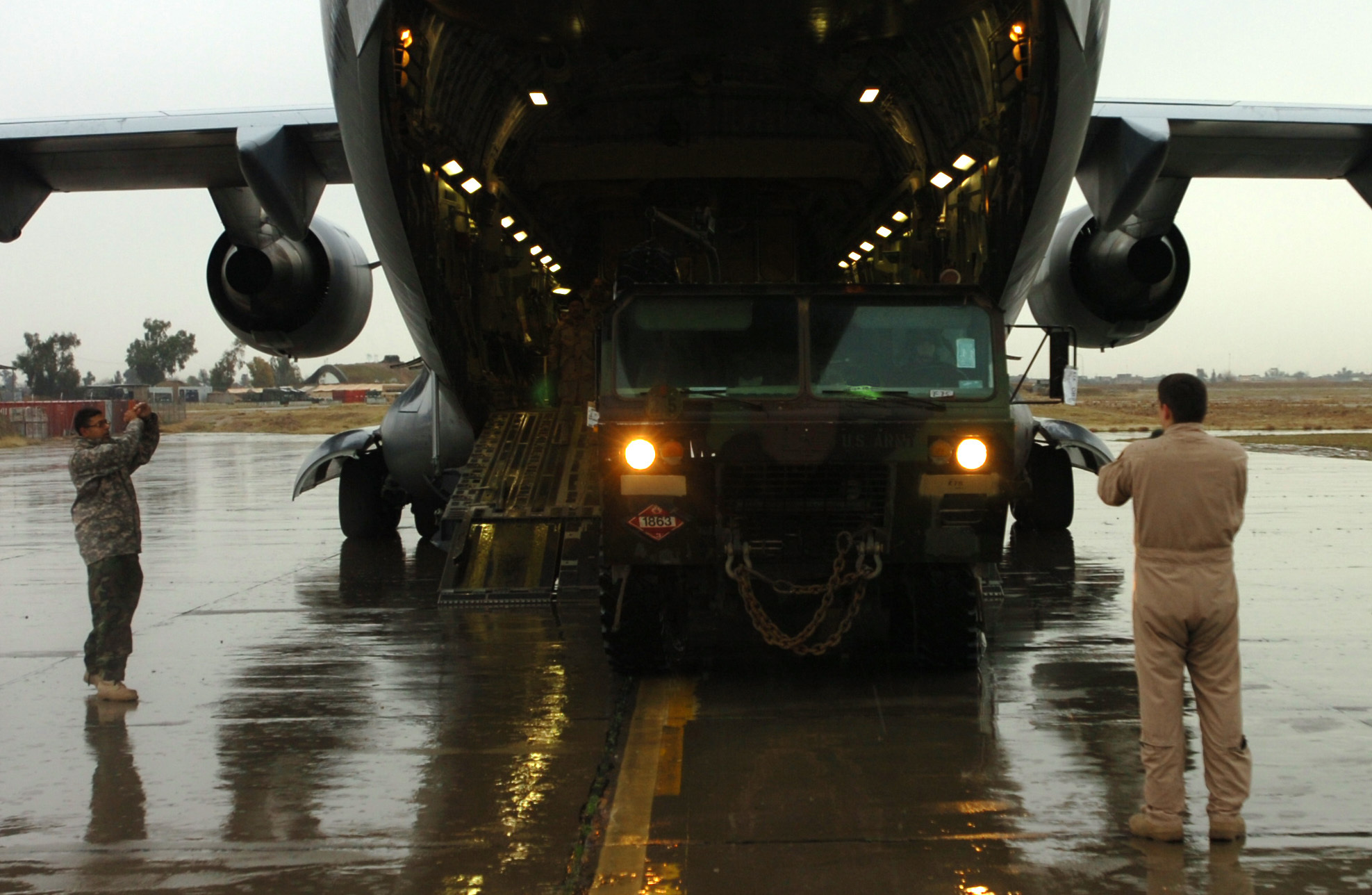
Credit: US Army
A possible path to redundancy, even if we are limited to a single producer or production line, is to prepare the logistics system for substitute materials. This refers to the substitution of one or more elements in the production, depending on availability. Once again, taking artillery ammunition as an example, this effect could be achieved by ensuring that the plant used for filling artillery shells can operate with multiple different shell types and fillers. For instance, in addition to the ‘preferred’ filler of high-performance, melt-castable insensitive munitions explosives, the plant should also be qualified to use Composition B or TNT, with advanced, pre-fragmented, extended-range-full-bore shell bodies as well as the ‘old school’ M107 shells. Additionally, alongside the ‘preferred’ electronic multimode fuze, artillery shells should also be qualified for use with one or more mechanical impact fuzes. At the same time, it must be guaranteed that these ‘substitute’ combinations of alternative bodies, fillers and fuzes are also qualified for use in the relevant guns, and that the gun crews are trained to use them. A principle like this, if correctly and completely implemented, can significantly increase the robustness of the logistics system, even if the ‘substitute’ artillery shells are less effective than the ‘preferred’ shells, whether due to shorter range, reduced precision or reduced effects on target.
In addition to redundancy, a further way to increase supply line robustness is to ensure that plans and resources are in place to provide security and defence for national production facilities. As an example, specific (local) army units are assigned to guard the production facility, and given regular opportunities to practice this task. Regular practice sessions will also help ensure that increased physical security can be maintained with minimum impact on the production itself. These security measures must necessarily encompass the entire battlespace, including defence against aerial threats and cyber-attacks.
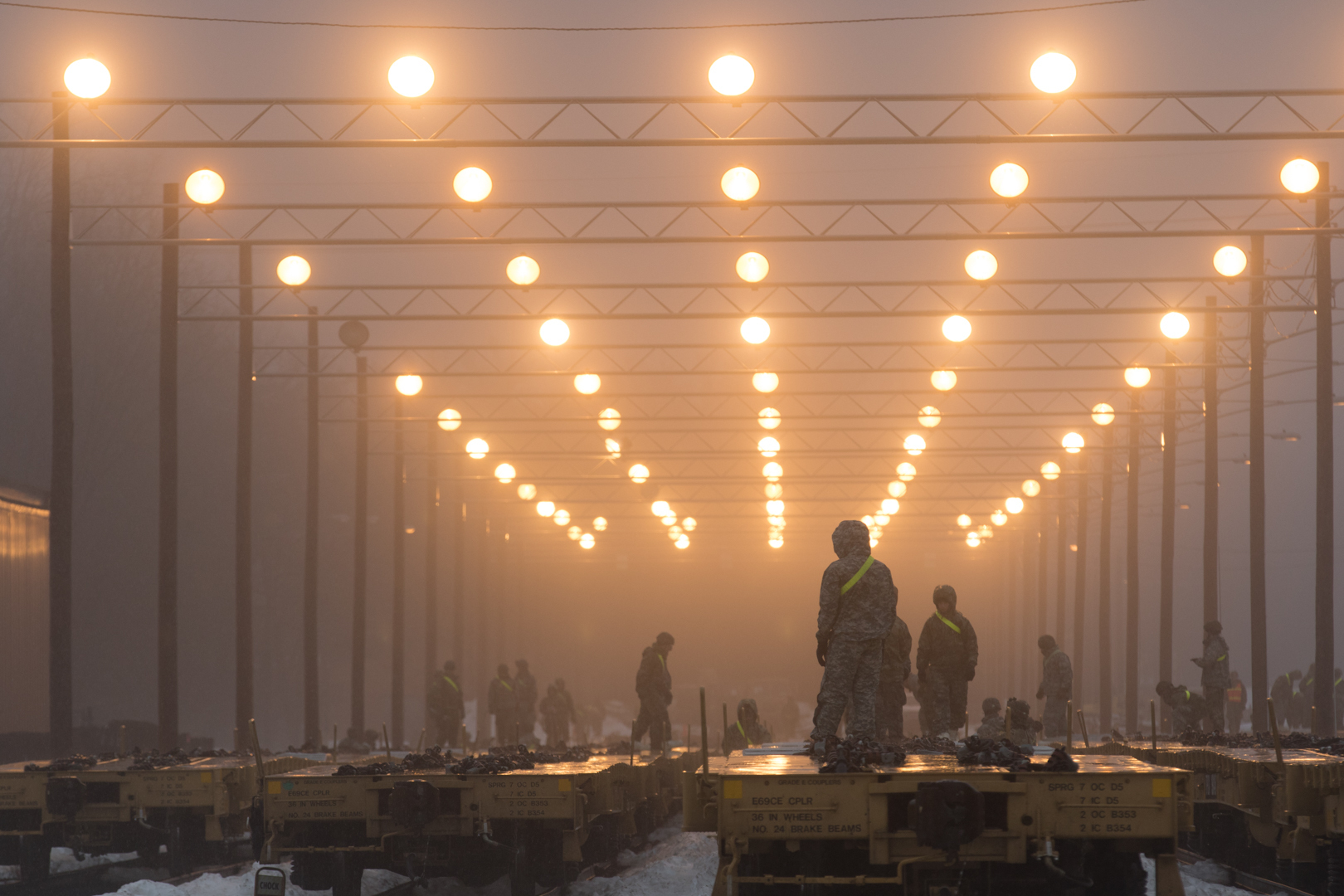
Credit: US Army
It can immediately be seen that, however effective a ‘protected web’ type logistics system is at maximising capacity and robustness, it requires considerable resources to duplicate each and every point and step in the logistics system. Even with the establishment of a web-type logistics system, we still need to maximise the production capacity of suppliers, and the speed with which this capacity can be increased.
As previously stated, a rapid ramp-up of production capacity, by switching from one to two or three shifts, is conditioned on the availability of trained workers. This is an important element for ammunition in particular, as many of the essential tasks in ammunition production are unique processes, thus limiting the pool of workers possessing the requisite skills among the general population. One option could be to establish a ‘reserve’, in much the same way that the armed forces have reserves of personnel, ready to be called up within a defined timeframe. One could envision drawing workers from related fields, training them in ammunition production, and then releasing them back to their regular jobs. Much like the armed forces reserves, these pre-trained workers would then be required to return temporarily to ammunition production at regular intervals, to maintain proficiency and to keep their knowledge current. If needed, these workers would then be available at short notice to work the second and third shifts of existing production lines.
Capacity can of course also be increased by establishing additional production lines. Since these will need to be ready to start production at short notice, and would have to remain in an acceptable state of repair and maintenance, one option could be to periodically switch normal, peacetime-level production between the various production lines, to ensure that they all remain operational.

Credit: US Army/Staff Sgt. Michael Reinsch
One last issue that many nations will need to deal with in order to effectively increase their logistical capacity and robustness, is that bane of efficiency – bureaucracy. The vast majority of government organisations, including the armed forces, are burdened with a multitude of compliance activities, internal controls and assorted bureaucratic oversight, broadly intended to ensure correct and responsible expenditure of taxpayers’ money. To take one example of how internal and external bureaucracies will need to change, consider the issue of multiple potential suppliers. Presently, many national and international procurement rules would immediately prohibit the award of multiple contracts for a single requirement.
Going beyond these steps, it will be necessary to keep a close eye on emerging technologies, and assess whether and how these can be integrated to improve logistics capacities and robustness. A notable example is additive manufacturing, also known as 3D printing. Instead of having large stockpiles of spare parts for weapons and vehicles, all requiring an extensive logistics system to deliver them where needed, additive manufacturing has the potential to allow spare parts to be manufactured much closer the ultimate destination, and on an ‘as-needed basis’, requiring only bulk raw materials.
Although the application of 3D printing to ammunition is still confined to laboratories, the technologies involved are steadily advancing. 3D printing of metal parts is not an issue, as has been repeatedly demonstrated and, in 2020, a team of researchers for the first time demonstrated the 3D printing of propellant. The author confidently predicts that, by the end of the decade, the technology to 3D print complete rounds of ammunition will exist, even if it may not initially be practical to do so at scale.
Unmanned vehicles represent another technology that has proliferated greatly in recent years. Whether on land, sea or in the air, unmanned vehicles have become an essential and unavoidable part of the modern battlespace, as demonstrated by both sides of the current war in Ukraine. In addition to their reconnaissance and attack roles, various efforts are already underway to explore the use of unmanned vehicles for resupply, both on and off the battlefield.
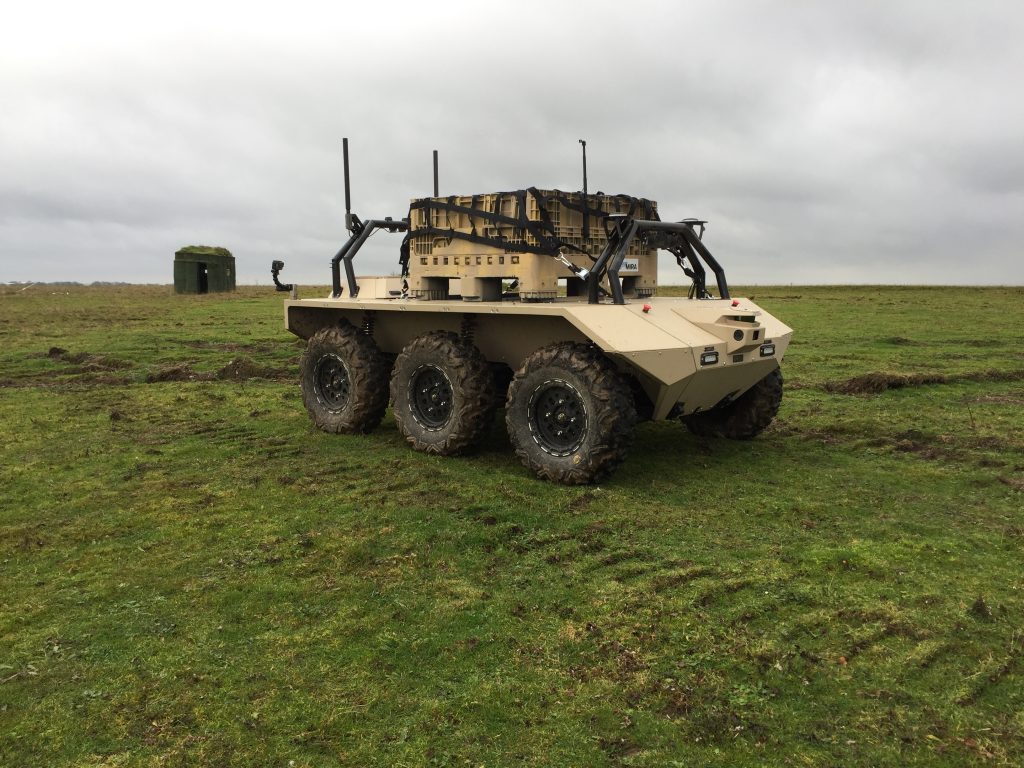
So which solutions are to be preferred, if logistics readiness is to be made ready for operations on the 31st day and beyond? That, ultimately, must be up to each individual countries and organisation, based on the size of their armed forces, their industrial base, their geography and strategic situation. However, there can be little doubt that any serious solution to supply the armed forces beyond the 31st day must encompass, not just a nation’s armed forces, but industry and, to some extent, all of society as well.
Thomas L. Nielsen




